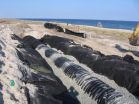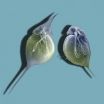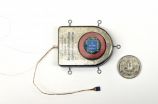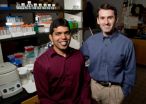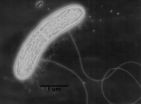(Press-News.org) Type 2 diabetes has strong hereditary tendencies and the genes we are born with cannot be changed. However, new research from Lund University in Sweden shows that we can modify the function of the genes through the epigenetic changes that take place in the course of life.
Epigenetic changes are usually described as a link between heredity and environment and come about as a result of factors such as ageing, chemicals, medication, diet, exercise and drugs.
Researchers have now demonstrated that half of the known genetic risk variants for type 2 diabetes can be influenced by epigenetic changes that in turn influence the function of the insulin-producing cells.
"This means that we gain a tool to influence the function of the risk genes, improve insulin release and thereby reduce the risk of diabetes", says Charlotte Ling at Lund University Diabetes Centre, who has today published a study on epigenetic effects in connection with type 2 diabetes in the journal Diabetologia.
The epigenetic factor that has been studied is a chemical change on the DNA strand following a certain pattern, known as DNA methylation.
"We have shown that 19 of 40 known genetic risk variants for type 2 diabetes are affected by DNA methylation, which in turn changes the function of the insulin-producing cells", says Charlotte Ling. "This is important. Many researchers have put a lot of time and resources into mapping our genome and finding genetic risk markers for diabetes and other diseases. We know that there are genetic variants that increase the risk of type 2 diabetes, but in most cases the reasons why this happens are still not known. The next step is to find this out and after this study of the genetic risk variants, we can say that in some cases the increased risk is probably due to varying degrees of DNA methylation."
The research group has studied insulin-producing cells from 84 deceased donors. This is the first epigenetic study to be carried out on the 40 risk markers for type 2 diabetes.
The present study shows that DNA methylation of genetic risk variants for diabetes influence the insulin-producing cells in various different ways, such as the amount of insulin they contain and the amount they are able to release into the blood stream.
"The next step in our work is to test whether we can reduce the risk of type 2 diabetes by changing the degree of DNA methylation in the genetic risk variants for the disease."
###
Publication:
The study has been published in the scientific journal Diabetologia, 2013 Mar 6. [Epub ahead of print]
Authors: Dayeh TA, Olsson AH, Volkov P, Almgren P, Rönn T, Ling C.
Title: 'Identification of CpG-SNPs associated with type 2 diabetes and differential DNA methylation in human pancreatic islets'
Link: http://www.ncbi.nlm.nih.gov/pubmed/?term=Identification+of+CpG-SNPs+associated+with+type+2+diabetes+and+differential+DNA+methylation+in+human+pancreatic+islet
Contact
Charlotte Ling, researcher at Lund University Diabetes Centre, tel: +46 40 391213, +46 40 391218, mobile: +46 706 145146, Charlotte.Ling@med.lu.se
Tord Ajanki, tord.ajanki@med.lu.se END
New clues in hunt for heredity in type 2 diabetes
2013-03-19
ELSE PRESS RELEASES FROM THIS DATE:
Cell Transplantation study finds stem cells in deer antler
2013-03-19
Putnam Valley, NY. (Mar. 19 2013) – A team of researchers in Seoul, Korea have reported finding evidence that deer antlers - unique in that they regenerate annually - contain multipotent stem cells that could be useful for tissue regeneration in veterinary medicine.
The study appears as an early e-publication for the journal Cell Transplantation, and is now freely available on-line at http://www.ingentaconnect.com/content/cog/ct/pre-prints/ct0897seo.
"We successfully isolated and characterized antler tissue-derived multipotent stem cells and confirmed that the isolated ...
Spanish researchers link cancer to failures in chromosome protection for the first time
2013-03-19
A study published today in the journal Nature Genetics explores a new mechanism that may contribute to the development of several tumours, including Chronic Lymphocytic Leukaemia, a type of cancer that affects more than a thousand new patients in Spain each year.
This work, led by researchers Carlos López-Otín, from the University Institute of Oncology at the University of Oviedo; Elías Campo, from the Hospital Clínic/University of Barcelona; and María Blasco, the Director of the Spanish National Cancer Research Centre (CNIO), represents a significant milestone for the ...
Researchers devise hidden dune filters to treat coastal stormwater runoff
2013-03-19
When it rains, untreated stormwater can sweep pollutants into coastal waters, potentially endangering public health. Now researchers from North Carolina State University have developed low-cost filtration systems that are concealed beneath sand dunes and filter out most of the bacteria that can lead to beach closures.
"It was not economically feasible to use a tract of beachfront property to treat stormwater. Instead, we were able to devise a system that could be installed in an area that was not developable – underneath the dunes," says Dr. Michael Burchell, an assistant ...
It's a sure thing: Knowledge of the game is not an advantage in sports gambling
2013-03-19
Psychologists have traditionally characterized compulsive gambling as an "impulse control disorder," and treated it by addressing the patient's obsessive tendencies. But according to Prof. Pinhas Dannon of Tel Aviv University's Sackler Faculty of Medicine and the Beer Yaakov Mental Health Center, not all pathological gamblers fit the same profile.
Though gambling is typically associated with casino games, strategic sports betting is rapidly gaining in popularity — and that's a whole other ball game, Prof. Dannon explains. "Sports gamblers seem to believes themselves the ...
Can a tropical water flea invade European lakes?
2013-03-19
Daphnia is a genus of small, planktonic crustaceans, commonly called 'water fleas' because of their jumpy swimming style and their size (between 0.2 and 5 mm). They live in various aquatic environments, ranging from acidic swamps to freshwater lakes, ponds, streams and rivers. Species of the genus Daphnia play a key role in freshwater food webs: they consume algae and are themselves an important food item for small fish.
Daphnia lumholtzi is a small subtropical and tropical representative, known as an invader in North America. It has never been found in Europe in the ...
Caterpillar-walk exhumation, the downfall of the Moche, and trilobites in camouflage
2013-03-19
Boulder, Colo., USA – New Geology articles posted online ahead of print cover everything from cratering on Mars to leopard-like camouflage in trilobites. Locations studied include the Ries Impact Crater; Hydrate Ridge, Oregon; Stromboli volcano; northern Peru; the Bushveld Complex, South Africa; western and central New York state; the Sahara Desert; and the French Alps. Brief highlights follow:
1. Analogous cratering at the Ries Impact Crater, Germany, and on Mars;
2. A presentation of the first secure, high-resolution land-sea PSV-based sediment-core synchronization;
3. ...
Wireless, implanted sensor broadens range of brain research
2013-03-19
A compact, self-contained sensor recorded and transmitted brain activity data wirelessly for more than a year in early stage animal tests, according to a study funded by the National Institutes of Health. In addition to allowing for more natural studies of brain activity in moving subjects, this implantable device represents a potential major step toward cord-free control of advanced prosthetics that move with the power of thought. The report is in the April 2013 issue of the Journal of Neural Engineering.
"For people who have sustained paralysis or limb amputation, rehabilitation ...
DNA catalysts do the work of protein enzymes
2013-03-19
CHAMPAIGN, Ill. — Illinois chemists have used DNA to do a protein's job, creating opportunities for DNA to find work in more areas of biology, chemistry and medicine than ever before.
Led by Scott Silverman, a professor of chemistry at the University of Illinois at Urbana-Champaign, the researchers published their findings in the journal Proceedings of the National Academy of Sciences.
Ideally, researchers would like to be able to design and build new catalysts from scratch that can do exactly what they want. Many enzymes make small modifications to the building blocks ...
UMass Amherst researchers reveal mechanism of novel biological electron transfer
2013-03-19
AMHERST, Mass. – When researchers at the University of Massachusetts Amherst led by microbiologist Derek Lovley discovered that the bacterium Geobacter sulfurreducens conducts electricity very effectively along metallic-like "microbial nanowires," they found physicists quite comfortable with the idea of such a novel biological electron transfer mechanism, but not biologists.
"For biologists, Geobacter's behavior represents a paradigm shift. It goes against all that we are taught about biological electron transfer, which usually involves electrons hopping from one molecule ...
Sex between monogamous heterosexuals rarely source of hepatitis C infection
2013-03-19
Individuals infected by the hepatitis C virus (HCV) have nothing to fear from sex in a monogamous, heterosexual relationship. Transmission of HCV from an infected partner during sex is rare according to new research published in the March issue of Hepatology, a journal published by Wiley on behalf of the American Association for the Study of Liver Diseases (AASLD).
Experts estimate that HCV affects up to 4 million Americans, most of whom are sexually active. Medical evidence shows HCV is primarily transmitted by exposure to infectious blood, typically through intravenous ...
